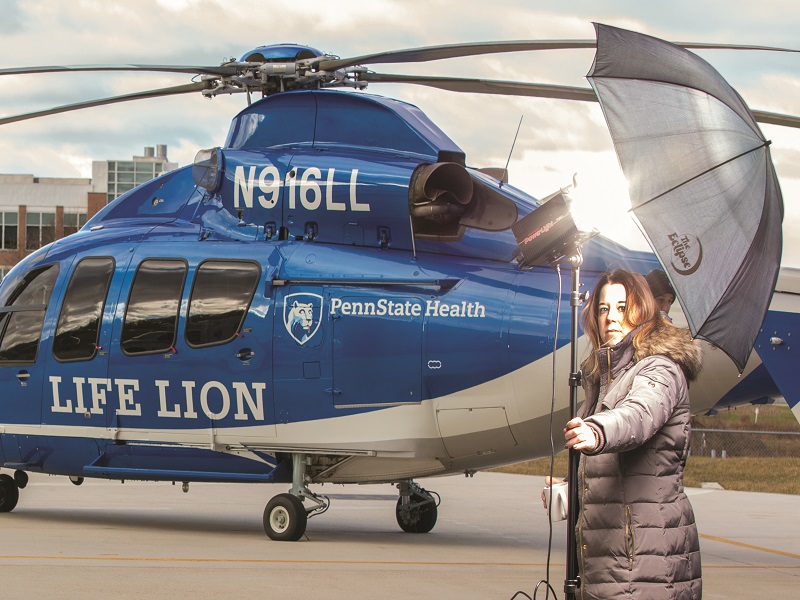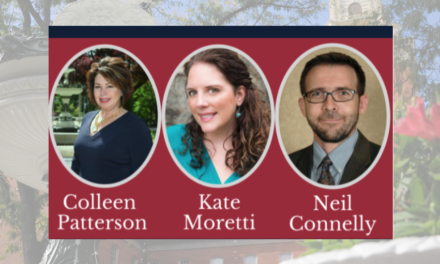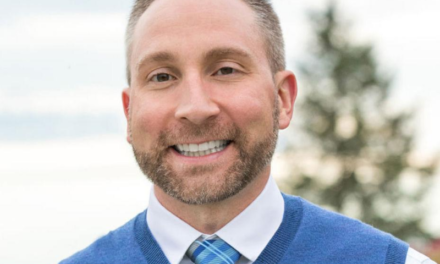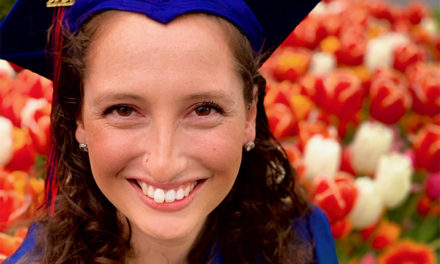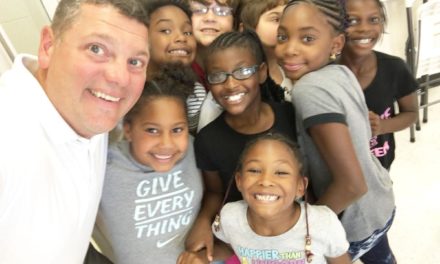This story first appeared in the Shippensburg University Magazine. View a digital copy of the Fall 2020 issue below.
The rumblings of a highly contagious virus in China started making national and international headlines not long after the New Year. On January 29, the CDC launched an agency wide COVID-19 response.
At the Penn State Health Milton S. Hershey Medical Center, media relations specialist Barbara Schindo ’11-’18m is used to the unpredictable nature of her work. But by the end of February, this felt different.
“It dawned on me, this is going to be a big deal. How are we responding to this, and how will it change the world?”
Following the CDC announcement, WellSpan Health’s Julie Kupchella ’07, strategic communication coordinator, and Jeannie Constable ’08, director of marketing and public relations, began developing the mounting messages they needed to communicate to their wide range of key publics.
“Nothing tests you like a global health pandemic. In this new normal, we had to be better communicators,” said Constable.
Devon Heberlig ’11, director of the Division of Emergency Planning and Safety Operation for the Department of Human Services, studied the situation as it unfolded across the country and prepared for what was to come. During an emergency, he said it’s important to get the right information to the right audiences at the right time. But the unpredictable nature of the pandemic made this goal challenging.
“It’s hard to make sound and timely decisions with incomplete and inaccurate information.”
On March 3, the CDC published the first report with guidance on how to prepare for a COVID-19 surge in the United States. By Monday, March 16,
Governor Tom Wolf announced that all K-12 Pennsylvania schools were to close.
Recently named Superintendent of the Year, Dr. Khalid N. Mumin ’95, at Reading Area School District, empathized that the closure, “… turned how we educate kids upside down.”
Like so many educators, Rasheed Dandridge ’17, 2020 Teacher of the Year at Stetson Academy in Philadelphia, committed to transitioning his relationship-centered English classroom to online learning, knowing there were students who still needed his support.
On March 27, the CDC released a Level 3 Pandemic Global Health Alert and began publishing weekly morbidity and mortality reports.
“The way the world changed overnight is mind-blowing,” Schindo said.
Around the same time, COVID-19 hit Pennsylvania full force, and “things really came to a head,” said Caryn Earl ’98, director of the Bureau of Food Assistance and Department of Agriculture.
Despite the crisis, in every situation, Ship alumni rose to the occasion, applying their skills and experience around the clock to keep Pennsylvanians safe and healthy.
An Unfolding Emergency
Services, treatments, procedures, and operations all changed in a matter of days for the healthcare industry. At WellSpan Health, Kupchella and Constable communicated internal updates on procedure and new safety protocols to nurses, doctors, and staff. Externally, they shared as much information as they could to the public and patients in need of services.
Penn State Hershey quickly set up an incident command center, aligning the leadership of different entities in one place. Schindo also took on the role of a public information officer during the pandemic, while continuing to balance her daily work responsibilities.
“The volume of output of our team increased tenfold…It was very important to us to be transparent. We created a public dashboard with the number of new cases, deaths, and how it was affecting us and the communities we serve,” Schindo said.
The barrage of questions constantly shifted, according to Schindo, from information about the virus, to readiness and preparedness, to availability of supplies, to changes in services.
Segmenting and tailoring those messages to each specific public was key, Constable added. From births, to end of life, to daily operations, the information had to be clear and swift.
“Julie [Kupchella] gets a lot of credit [for] the amount of messages she quickly got out to educate people on the dos and don’ts. Or important messages [such as], ‘Hey, if you tested positive and recovered, donate your plasma’,” Constable gleamed.
Many communication professionals took on fluid, round-the-clock days, nights, and weekends to handle the increased public and media interaction as the world adapted to online education and work.
Meeting Increasing Demand
As the healthcare industry adapted to handle the needs of the pandemic, families across the country were adjusting to online education and work under one roof. The transition was not without challenges, and new concerns quickly emerged.
Some parents who were unable to work remotely were forced to quit their jobs to provide childcare and schooling. Many families who already were struggling to provide daily meals were now being asked to provide expensive technology for students to learn from home.
For Mumim’s students in the Reading Area School District, the technology dearth is pervasive. “For a district that is 99% underserved, we are now starting to see a true digital divide between the school districts that have the means and school districts that do not.”
Mumin says the district has a “fiscally responsible” plan to implement a student digital platform over the next three years. But technology was just one of the challenges for his district’s families.
Children who took advantage of meals at school no long had daily food security. And, many caregivers who were already struggling to support their families were furloughed or lost their jobs during the quarantine.
The demand for services from food banks sharply rose, and Caryn Earl ’98, director of the Bureau of Food Assistance and Department of Agriculture, had to determine how to meet that need with new operations during the height of the pandemic.
“There was a 55 percent increase in demand for food banks across the state,” she said.
Earl employed her background with Feed America, and worked with state and national legislators to rethink food bank operations, to move to a low-contact, pre-packaged method that minimized interactions between clients and volunteers. She successfully pushed to lift the typical paperwork so that anyone in need could easily access food.
“It took a lot of legwork with the food banks and USDA to meet requirements,” Earl said. “It was critical to be able to serve the increased demand.”
Heberlig carefully watched the trends in other states to determine what needs Pennsylvanians might face. He worked with agencies across the state and country to coordinate efforts, identify unmet needs, and share resources.
“There is a rush to acquire scarce resources, and their limited supply makes allocations difficult, so hard choices are being made daily,” Heberlig said.
The situation reminded Earl of the economic downturn in 2008-09, and similarly, she expects the need to remain high.
“Even as people get back to work and back to normal, you have to consider that they might still face food insecurity,” she said. “This is going to be our new normal. It is starting to level off, but will remain high.”
“The economic impact has a real bearing on what happens next,” said Heberlig. “With unemployment being so high, those who lost jobs may become food and financially insecure, placing even more pressure on state government.”
Fortunately, Earl said Gov. Tom Wolf and his administration have been fully supportive of these needs. “It’s been incredibly hard, but I’m very proud of working with our legislature,” Earl said.
Herberlig added, “The DHS Emergency operations team, along with other commonwealth agencies, work together to ensure no one goes hungry. In the first few weeks, hundreds of thousands of meals were allocated to support the community at food banks and [volunteer] organizations.”
Hanging onto Hope
Despite the rapidly developing state of emergency, stories of hope surfaced. Those stories are what kept our dedicated Ship alumni going.
“We needed positive news,” Constable said. “We found a tremendous sense of community in Franklin and Cumberland counties…I feel so proud. It was really an incredible effort.”
Before strict social distancing orders, members of the community wrote supportive messages to WellSpan staff members in chalk, tied white ribbons to the trees, and donated a tremendous amount of food. WellSpan also developed a way to securely deliver a message of hope to members of the team. “They were able to feel that love in a safe way. There is power in words,” Constable said.
Dandridge said his personal motto, “find a way to make a way,” helped him finish out his school year online.
Mumin mirrored Dandridge’s perseverance and positivity with an inspiring pep talk in a back-to-school video for the Reading Area School District, which has now gone viral. The video features a Kid Superintendent, aka Jermaine Edwards I, who reminded us all, “Let’s give each other grace, not grief. We’re all in this together”.
Looking Back, Moving Forward
Six months later, the pandemic continues to ravage the world, and those frontline heroes continue to care for patients, track trends, adjust procedures, and stay ahead of what might be next. Although the country yearns for normalcy, Heberlig reminds people to remain cautious and listen to professionals.
“Even though guidance changes, there are some very smart medical professionals trying to keep you safe.”
Heberlig and Schindo reiterated the importance of getting information from trusted sources.
“Don’t save or share information if you don’t check the source. Think critically,” Schindo said.
And, Heberlig’s most important advice, “Don’t panic. Be informed.”

